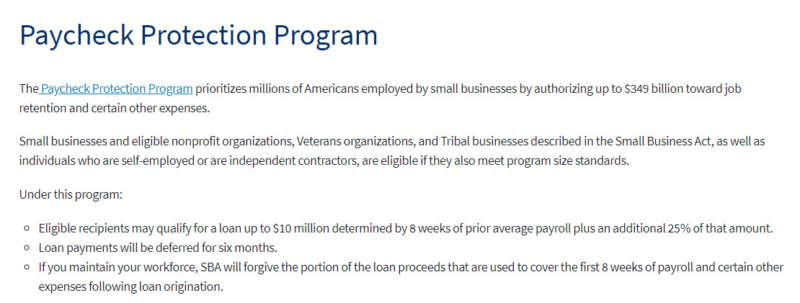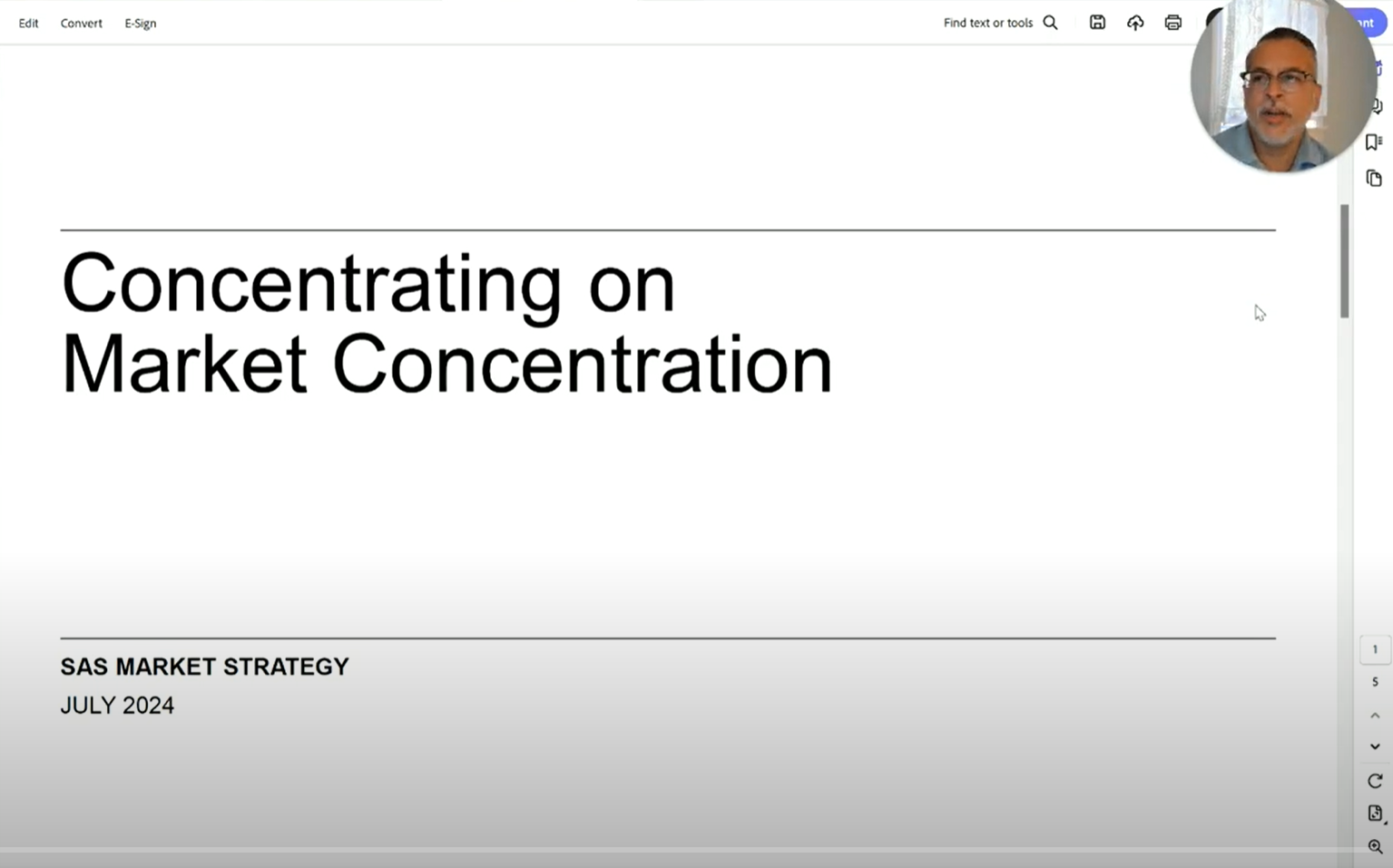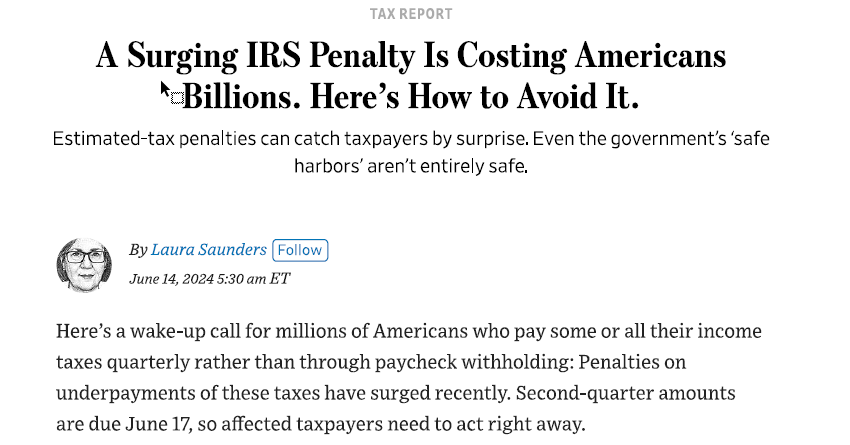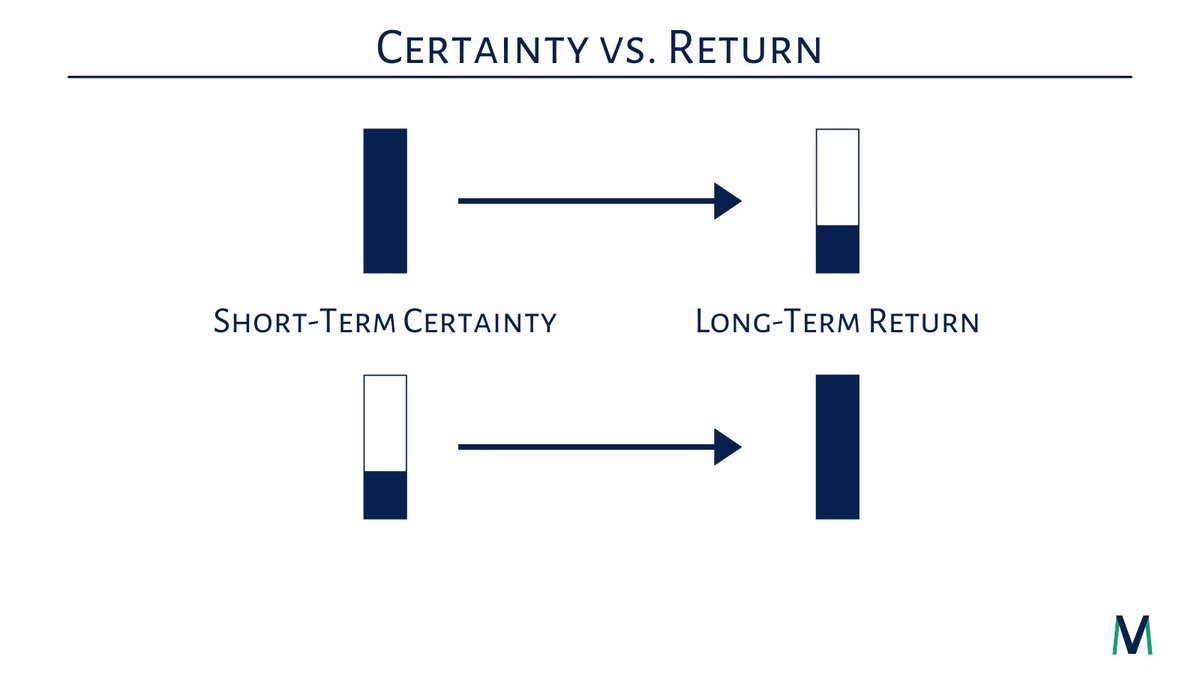The recently passed CARES Act provides a number of resources to help small businesses. Our hope is that by sharing this information with our network, you will share it with any businesses you know who are struggling and truly need the help. Unfortunately, many of the people who need this help the most will not get it as some of these programs (like the Payroll Protection Program we highlight below) are on a first come first serve basis.
The truth is businesses with strong advice & support systems of financial advisors, accountants, lawyers, and strong bank relationships will be best positioned to be guided through the process. While many businesses who are most in need right now are busy making very difficult decisions about paying employees and keeping the lights on, they may not have the time or expertise to properly evaluate these programs. Our hope is that by providing some guidance via this blog that information may find its way into some of their hands so they can take necessary action.
One important note to start off: while the CARES Act has been signed into law, not all of the details on how some of the provisions of the law will actually be implemented are known yet. This is how it works, the law written requires guidance from government agencies which typically take time to figure out. What is unique about this is how quickly they are trying to get these programs going. Because of this, applications for loans and decisions on the best path for you and your business may need to be made before all the details are known.
If these resources go as quickly (as we expect), we are hopeful there will be additional action taken by congress to open up a second wave of stimulus that will get money into the hands that need it most.
Existing SBA 7(a) Loans:
If you are a small business and have an existing SBA 7(a) Loan, the SBA will be paying the principal and interest on those loans for the next 6 months. In short, you won’t have to make any payments on those existing loans!
Payroll Protection Program:
This program has been getting a lot of attention so far. As the name implies, the essence of this program is to help businesses keep employees on payroll. In short, it is a loan program where the SBA will forgive some of the loan assuming certain criteria are met, essentially making it a grant to those businesses.
For those looking to apply the first day to officially submit an application is April 3rd. This program will be administered by SBA approved banks. The banks will have some control over what order they submit applications in, and it is likely that some banks will be processing applications for their existing customers first. So, if you have a relationship with a bank, we would strongly suggest starting with a call to them to learn more and start the application process!
Your bank will help you with the information you’ll need to apply. Surprisingly, because the loan is based on your payroll and not a traditional underwriting of your business, the application process is relatively easy. You will need to make sure you have verifiable payroll data and good documentation of this. Ideally your 2019 payroll register which you can request form your payroll vendor.
The program makes $349B available. That may sound like a lot of money but given the number of small businesses in the US it is likely to go quickly. The language in the bill is written to make it relatively easy to qualify, all you need is to believe is that there is an economic uncertainty to your business because of this current crisis: it’s hard to imagine a business that couldn’t credibly claim that.
Click the image for more details from the SBA.
Here are some additional resources from the Treasury outlining more details about the program including the terms of the loan (0.5% UPDATED 1% interest rate, 2 year term).
https://home.treasury.gov/policy-issues/top-priorities/cares-act/assistance-for-small-businesses
Economic Injury Disaster Loans and Loan Advance (EIDL):
Another loan program you may hear about is the EIDL, which is an expansion on an existing loan program. Unlike the PPP, this loan is not eligible for forgiveness. It is a low interest loan (3.75% for businesses with terms up to 30 years). One of the unique changes to the program via the CARES Act is that you can request an advance of up to $10,000 simply by submitting the application. In order to get immediate funds to those in need the SBA has said it will send the $10,000 out within 3 days of request. Your loan will then go through an underwriting process that could take weeks, however the $10,000 is yours to keep even if you are denied the loan!
Unlike the PPP, this program will not be administered by banks, but directly by the SBA. To apply for this loan you can click on this link and apply directly with the SBA.

Additional Resources:
There are additional resources in the CARES Act for small businesses. We wanted to highlight a couple here:
- Unemployment: Typically, self-employed individuals were not eligible to collect unemployment. The CARES Act provides a Federal unemployment benefit of $600/week for 4 months. This benefit is being administered via the State Unemployment Departments, and many states have yet to open it up as they are awaiting more guidance from the Feds. Please check your state’s unemployment office website for updates. Here’s the link to MA: https://www.mass.gov/unemployment-insurance-ui-online Note: this $600 Federal benefit is available to all who qualify for UI. It becomes an additional benefit for those collecting from their state.
- Employee Retention Credit: This is another provision in the CARES Act to encourage keeping employees on payroll. The Employee Retention Credit is a fully refundable tax credit for employers equal to 50 percent of qualified wages (including allocable qualified health plan expenses) that Eligible Employers pay their employees. This Employee Retention Credit applies to qualified wages paid after March 12, 2020, and before January 1, 2021. The maximum amount of qualified wages taken into account with respect to each employee for all calendar quarters is $10,000, so that the maximum credit for an Eligible Employer for qualified wages paid to any employee is $5,000.
Eligible Employers for the purposes of the Employee Retention Credit are those that carry on a trade or business during calendar year 2020, including a tax-exempt organization, that either:
- Fully or partially suspends operation during any calendar quarter in 2020 due to orders from an appropriate governmental authority limiting commerce, travel, or group meetings (for commercial, social, religious, or other purposes) due to COVID-19; or
- Experiences a significant decline in gross receipts during the calendar quarter.
We encourage you to reach out to your accountant and advisors to determine if the ERC would be more beneficial to you than the PPP loan program. It is our understanding that if you have some of the loan forgiven you become ineligible to benefit from the ERC, so a calculation for your situation would be needed.
Here’s additional info from the IRS on this credit:
https://www.irs.gov/newsroom/faqs-employee-retention-credit-under-the-cares-act
Summary:
There are a lot of other resources in the CARES Act for individuals and businesses. We’ve written a blog on those here and will continue to try to update it with additional information as it comes out. There are also a lot of other local state or community resources being made available to those in need. I’m sure you’ve seen stories already of ways people are helping out their neighbors.
Final note: As we mentioned above the details for many of these programs is still being finalized. Know that some of the above may change in the coming days and weeks. We’ll try to keep this page up to date.














